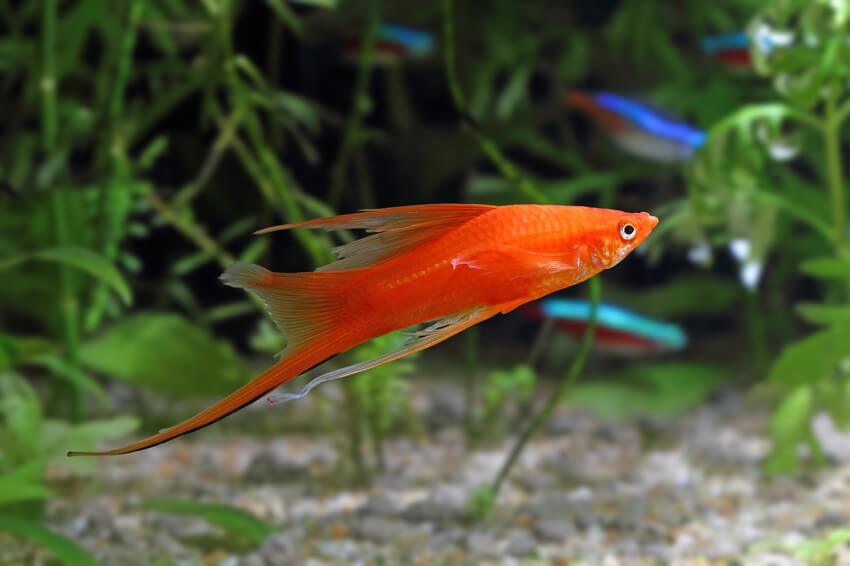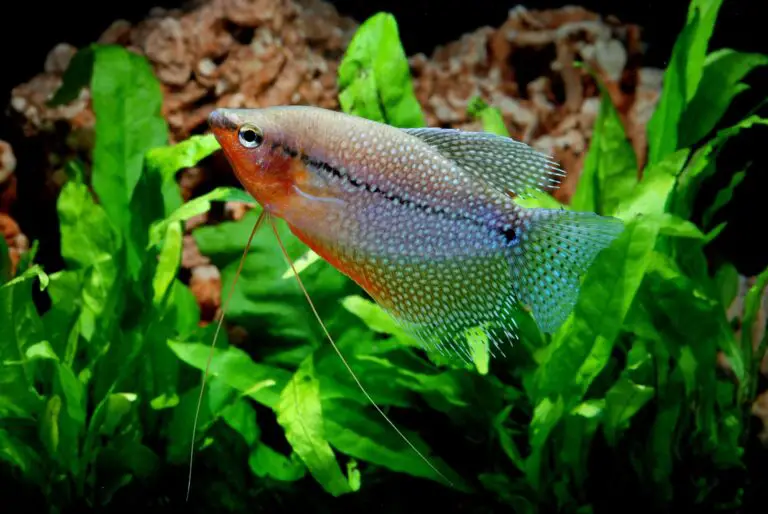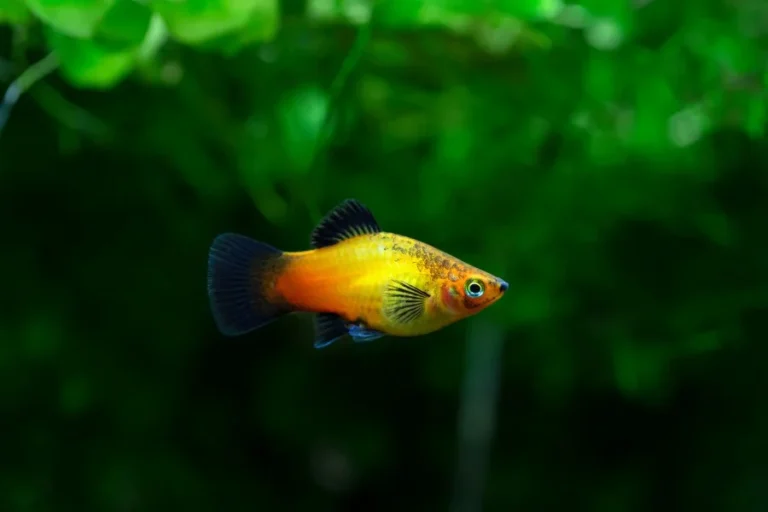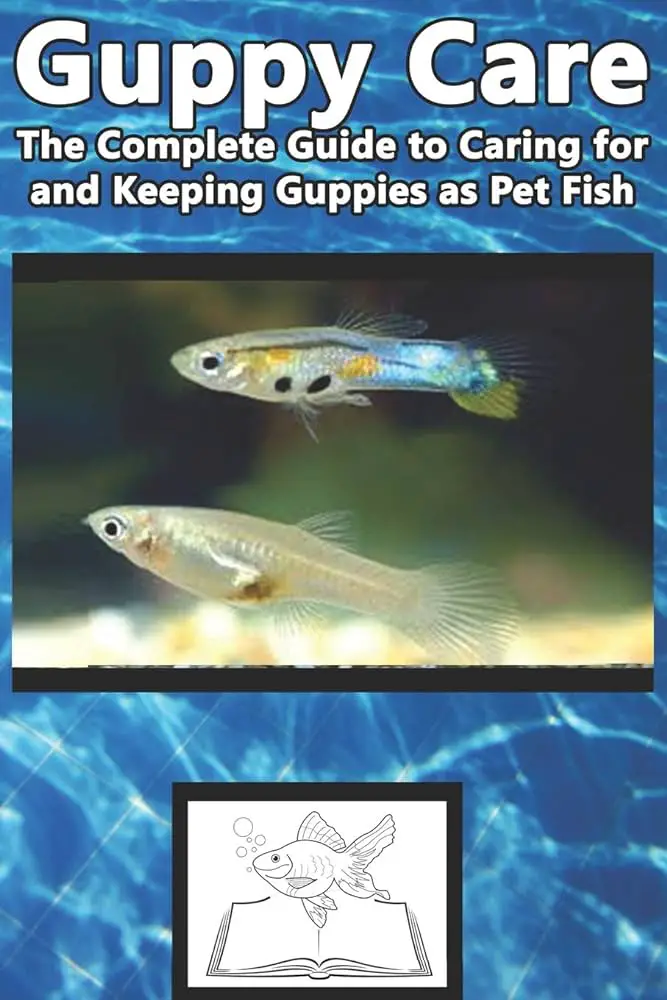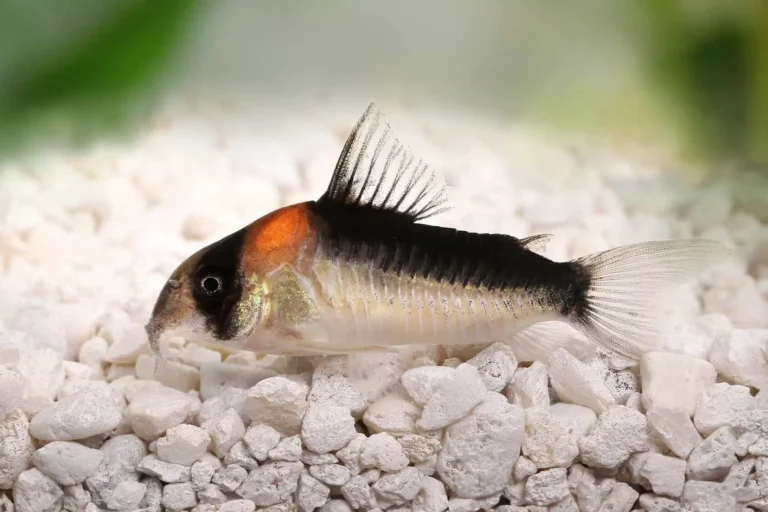Swordtail Fish: Ideal Swimmers for a Lively Community Aquarium
When it comes to the art of keeping fish, the choices can seem as varied as the colors of the rainbow. Each species adds a unique charm to your undersea landscape, but if you’re a beginner or simply looking to enrich your existing aquatic community, you might be on the lookout for a peaceful, adaptable, and aesthetically pleasing species. Here, we cast our nets on Swordtail Fish — the elegant and epically tailed swimmers known for their hardy nature and vibrant colors. This comprehensive guide is tailored to help you create a dynamic aquarium ecosystem that’s not only visually stunning but also a joy to care for.

Swordtail Fish: Characteristics and Care
The Swordtail Fish (Xiphophorus hellerii) boasts a slender, elongated body that’s often adorned with a brightly colored, decorative tail fin, hence the name. This variety of freshwater fish is available in a range of colors, including orange, red, black, and green, and can sometimes display a shimmering iridescence, particularly under the flicker of aquarium lights.
Physical Appearance and Varieties
One of the most notable features of the Swordtail is the extension of the lower lobe of the tail beyond the upper, which can resemble the shape of a sword. Males typically have the “sword,” which is a feature that they use not just for display, but also to maneuver and assert dominance within the tank. Females, on the other hand, have a more rounded appearance without the uniquely shaped extension.
The breed comes in several varieties with different colorations and tail shapes, which have been selectively bred over the years. Among these are the red, hi-fin, lyretail, and wag varieties. These aesthetic differences offer an array of choices for fishkeepers looking to add a touch of diversity to their tank.
Tank Setup and Water Conditions
Swordtail Fish are remarkably resilient and can thrive in a variety of tank conditions. A standard 20-gallon tank is suitable for a pair or small group, providing ample space for swimming and the opportunity to establish territories. However, if you entertain the idea of a community tank, large volumes with an appropriate filtration system are essential to maintain water quality.
Water should be maintained at a neutral pH (around 7.0), with temperatures between 72-82°F (22-28°C) — a range that can often accommodate other freshwater species as well. These conditions mimic the Swordtail’s natural habitat, where they inhabit slow-moving streams and waters that are slightly alkaline.
Feeding Habits and Dietary Needs
In nature, Swordtails are omnivorous, consuming algae, small insects, and plant matter. In captivity, they should be provided with a balanced diet of high-quality flake or pellet food supplemented with occasional live or frozen treats such as brine shrimp, bloodworms, and daphnia. To ensure optimal health and growth, varying their diet can be beneficial.
These fish are also known to nibble on algae, thus aiding in tank maintenance, but this shouldn’t be their sole food source. Regular feeding patterns, two to three small meals a day, are recommended to prevent overfeeding and maintain a healthy environment.
Community Aquarium Dynamics
The Swordtail’s naturally peaceful disposition makes it an excellent candidate for a community tank. They generally get along well with most other community fish species, as long as the tankmates aren’t particularly aggressive or too small to cohabitate safely. Good tankmates for Swordtails include:
- Mollies
- Platies
- Tetras
- Corydoras Catfish
- Gouramis
- Some freshwater shrimp and snail species
When selecting companions for Swordtails, it’s important to consider the schooling tendencies, adult size, and temperament of the other species. Compatibility can greatly depend on individual personalities.
Creating a Harmonious Tank Environment
To foster a harmonious community tank, providing hiding places, dense vegetation, and a mix of mid-tank and lower-tank swimmers allows each species to find their own niche. Decor such as driftwood, caves, and live plants can also help alleviate any potential aggression or territory disputes.
Regular monitoring and observation are key. If any behavioral issues arise, such as excessive chasing or fin-nipping, consider adjusting the tank’s layout or rehoming any aggressive tank members to another suitable habitat.
Breeding Swordtail Fish
Swordtails are viviparous, which means they give birth to live fry, making them a popular choice for hobbyists interested in breeding. If you have both male and female Swordtails in your tank, breeding can occur quite naturally. Here’s how you can encourage and support the process:
Reproduction Process and Considerations
Males are known for their colorful displays and the “sword” which they use to court females. Once fertilized, females can give birth to a brood of up to 80 fry every 30 days. When a female is close to giving birth, her gravid spot, a dark area near her anal fin, will darken as the delivery date nears.
The potential for rapid population growth makes it important to have a plan in place for what to do with the fry. Whether you intend to raise them or provide them as food to other fish, a separate breeding tank or additional housing will be necessary.
Tips for Successful Breeding
Provide dense plant cover, as well as floating plants, so the fry have a place to escape and hide from adult fish. Separating pregnant females just prior to birth and placing them in a breeding net or separate tank can protect the young and increase their chances of survival.
Fry can be kept in a separate tank until they are large enough to join the community. Remember, successful breeding requires meticulous care and attention to water quality, as fry are more sensitive to changes and water conditions than adult fish.
Common Health Issues and Care Tips
Despite their resilience, Swordtail Fish are still susceptible to the common health issues that can affect freshwater species. By familiarizing yourself with some of the common problems and their solutions, you can help ensure your Swordtails stay happy and healthy.
Recognizing Signs of Illness
Symptoms of illness in Swordtails can range from changes in color and behavior to physical indicators like clamped fins, spots, or changes in size and shape. Common diseases include:
- Ich (white spot disease)
- Fin rot
- Velvet
- Swim bladder issues
- Fungus
Regular observation is your best defense. Frequent water changes, proper diet, and stress reduction can help prevent most diseases.

Preventive Measures and Treatment Options
Maintaining high water quality through regular maintenance, filtering water, and ensuring that your tank is cycled are crucial preventive measures. New arrivals to your tank should be quarantined to prevent the spread of diseases.
If you do observe signs of illness, research the appropriate treatment and act quickly, as many diseases can spread rapidly. Mild cases can often be addressed through environmental changes and over-the-counter medications, while more severe cases may require the services of an aquatic veterinarian.
Conclusion
The allure of an aquarium is the tranquil yet vibrant world it represents. Swordtail Fish, with their grace, beauty, and easygoing nature, provide a perfect focal point for anyone looking to enhance their aquatic hobby. From their breathtaking displays to their role in a bustling community, Swordtails are an ideal option for those taking their first steps into the captivating world of fishkeeping.
With this in-depth guide, you’re well-equipped to introduce Swordtail Fish into your home aquarium. Remember, the key to successful fishkeeping lies in patience, learning, and a genuine love for these underwater marvels. We encourage you to populate your aquarium with these stunning swimmers and witness the dynamism they bring to your aquatic landscape.

